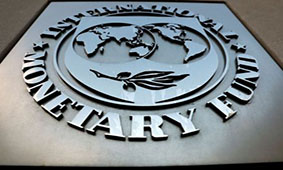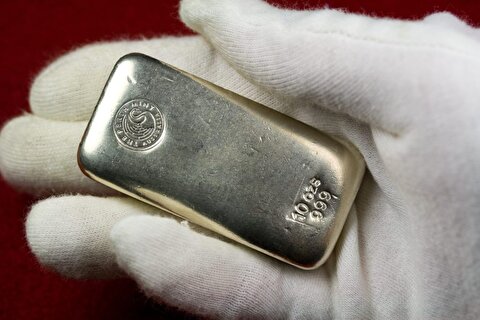
Iran’s Trade Surplus Hits $2bln in 8 Months


"Iran’s non-oil exports in the said eight-month period stood at $31.4 billion which was higher than the corresponding period last year by around 13 percent," figures released by the Customs Department showed.
The Customs Department also announced in a statement that Iran's imports also lowered by 12.5 percent to reach $29.5 billion.
Iran’s leading export item was condensate which fetched the country $2.7 billion. This accounted for around 9 percent of the country’s overall non-oil exports, the statement added.
Other key export data-x-items included liquefied propane ($1.3 billion), light oil products excluding gasoline ($1.1 billion) and methanol ($1 billion).
Figures showed that the majority of Iran’s non-oil exports were petrochemical products (33 percent).
The top export destination for Iran’s non-oil products was Iraq which imported $6.7 billion worth of products from the Islamic Republic over the period.
The Customs Department said in its statement that exports to Iraq saw a whopping rise of 66.5 percent compared to the same period last year.
Next key destinations for exports of Iranian products were China ($6.4 billion), the UAE ($5.9 billion) and Afghanistan ($2.2 billion).
Also, leading exports to Iran were China ($7.3 billion), the UAE ($4.4 billion), South Korea ($1.7 billion) and India ($1.6 billion).
The Central Bank of Iran (CBI) announced last Monday that Tehran's total foreign debts reduced by 9 percent in the first six months of the current Iranian year (March 21 – September 21), showing a significant slump as compared to the same period last year.
The volume of Iran’s foreign debt by the end of Iranian month of Shahrivar (Sept. 21) hit $10,317 million, $6,853 and $3,464 million of which is related to the mid-, long-and short-term periods, respectively.
CBI also put the total volume of Iran’s foreign debt by the end of Iranian month of Mordad (August 21) at $10,405 million, the rate of which faced a significant decline in the next month.
Statistics show that Iran’s total foreign debts by the end of the first Iranian month of Farvardin (April 21) hit $11,305 million, showing a significant decline in the first six months of the current year.
Accordingly, the proportion of Iran’s foreign debts to gross domestic product (GDP) stands at about 2.5 percent which is considered as a partial figure.
Comparing the index of ratio of Iran’s foreign debt to GDP with other countries indicates that Islamic Republic of Iran is among the countries that has the minimum foreign debt rate in the world.
Foreign debt includes debts of a country to foreign lenders which can contain the loans received from foreign private banks, other governments and international financial institutions such as World Bank (WB) and International Monetary Fund (IMF).


Trump weighs using $2 billion in CHIPS Act funding for critical minerals

Electra converts debt, launches $30M raise to jumpstart stalled cobalt refinery

Codelco cuts 2025 copper forecast after El Teniente mine collapse

Barrick’s Reko Diq in line for $410M ADB backing

Abcourt readies Sleeping Giant mill to pour first gold since 2014

SQM boosts lithium supply plans as prices flick higher

Nevada army depot to serve as base for first US strategic minerals stockpile

Pan American locks in $2.1B takeover of MAG Silver

Viridis unveils 200Mt initial reserve for Brazil rare earth project

Kyrgyzstan kicks off underground gold mining at Kumtor

Kyrgyzstan kicks off underground gold mining at Kumtor

KoBold Metals granted lithium exploration rights in Congo

Freeport Indonesia to wrap up Gresik plant repairs by early September

Energy Fuels soars on Vulcan Elements partnership

Northern Dynasty sticks to proposal in battle to lift Pebble mine veto

Giustra-backed mining firm teams up with informal miners in Colombia

Critical Metals signs agreement to supply rare earth to US government-funded facility

China extends rare earth controls to imported material

Galan Lithium proceeds with $13M financing for Argentina project

Kyrgyzstan kicks off underground gold mining at Kumtor

Freeport Indonesia to wrap up Gresik plant repairs by early September

Energy Fuels soars on Vulcan Elements partnership

Northern Dynasty sticks to proposal in battle to lift Pebble mine veto

Giustra-backed mining firm teams up with informal miners in Colombia

Critical Metals signs agreement to supply rare earth to US government-funded facility

China extends rare earth controls to imported material

Galan Lithium proceeds with $13M financing for Argentina project

Silver price touches $39 as market weighs rate cut outlook

















